





 |
 |
 |
 |
 |
 |
| glamis | profile | all galleries >> Japan in Pictures 2003 >> Nikko | tree view | thumbnails | slideshow |
Click on thumbnails for full image and comments
| previous page | pages 1 2 ALL | next page |
 Omikuji at the Rinnoji Temple, Nikko I just fell in love with these things, so you'll have to look at 3 pics. Sorry!
|
 Omikuji at the Rinnoji Temple, Nikko Omikuji are fortune telling paper slips found at many shrines and temples. Randomly drawn, they contain predictions ranging from daikichi ("great good luck") to daikyo ("great bad luck"). By tying the piece of paper around a tree's branch, good fortune will come true or bad fortune can be averted.
|
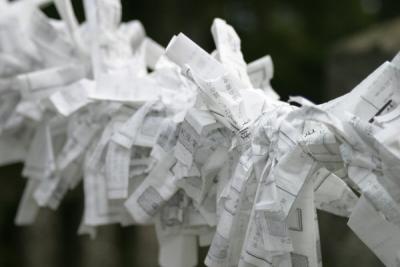 Omikuji at the Rinnoji Temple, Nikko Omikuji are fortune telling paper slips found at many shrines and temples. Randomly drawn, they contain predictions ranging from daikichi ("great good luck") to daikyo ("great bad luck"). By tying the piece of paper around a tree's branch, good fortune will come true or bad fortune can be averted.
|
 Countryside on the way to Nikko I took this on our way to Nikko from the train. Very pretty countryside. A very nice ride. |
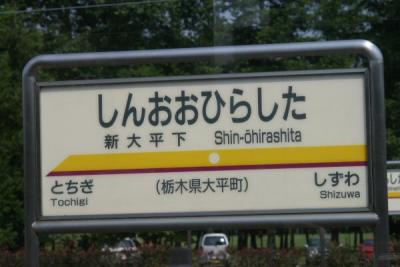 One of the stops on the way to Nikko |
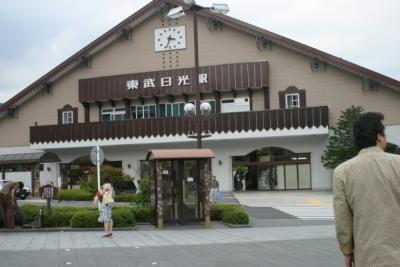 Nikko Station This was a very pleasant little station with a nice large lobby and helpful folks. |
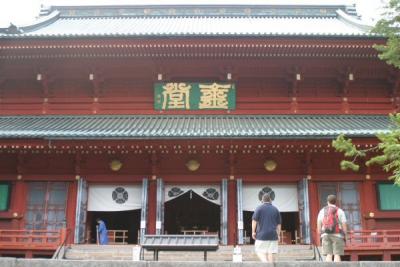 Rinnoji Temple |
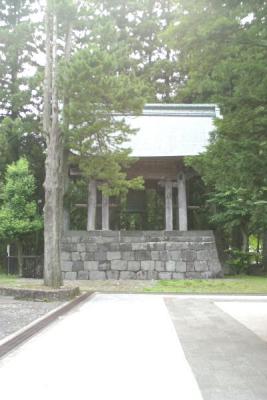 Bell at Rinnoji Temple, Nikko On New Year's eve, temple bells are rang 108 times, corresponding to the Buddhist concept of 108 worldly desires.
|
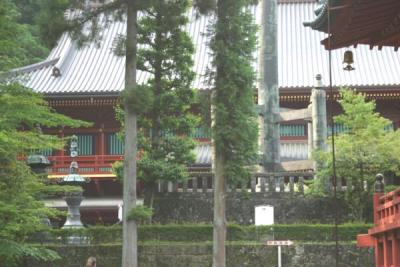 Gohoten-do on the Rinnoji Temple grounds, Nikko I'm not sure what this building housed, but it was very beautiful. |
 Another shot of the Gohoten-do on the Rinnoji Temple grounds, Nikko That's my sister in the left bottom corner. She'll appreciate that shot. :-P |
 Another Gohoten-do picture on the Rinnoji Temple grounds, Nikko |
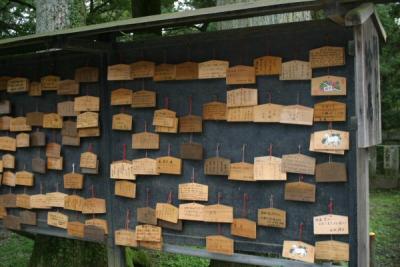 Ema at the Rinnoji Temple Shrine visitors write their wishes on these wooden plates and then leave them at the shrine in the hope that their wishes come true. Most people wish for good health, success in business, passing entrance exams, love or wealth.
|
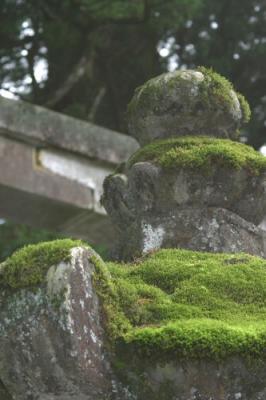 Mossy Lantern, Nikko |
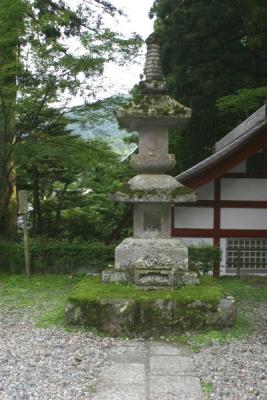 Lantern on the grounds of Rinnoji Temple I just adore the moss and the stone. |
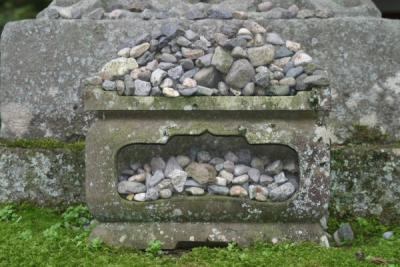 At the base of a lantern, Rinnoji Temple grounds, Nikko I'm not sure exactly what this is, but I saw lots of rocks stacked in the lanterns all over Japan. This on fascinated me, so I snapped it. |
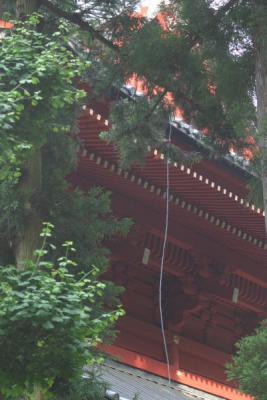 Roof line of Gohoten-do on the Rinnoji Temple grounds, Nikko I really wish that wire wasn't in this shot, but what can you do? |
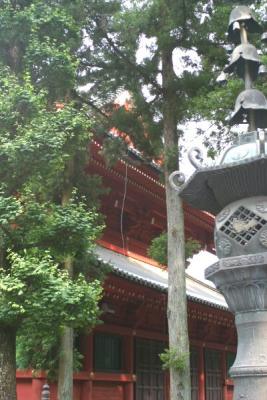 Gohoten-do and lantern on the on the Rinnoji Temple grounds, Nikko Again, I just liked the shot so I took it. |
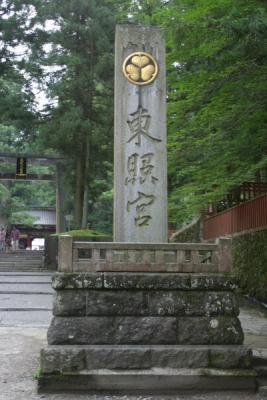 Entrance to the Toshogu Shrine, Nikko |
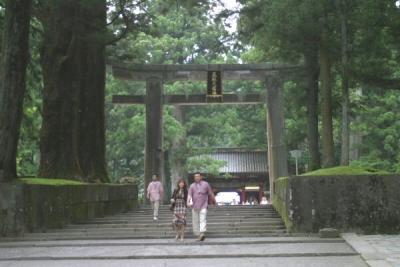 Torii at the entrance to the Toshogu Shrine, Nikko The Toshogu is the mausoleum of Tokugawa Ieyasu, founder of the Tokugawa shogunate which ruled Japan for over 250 years until 1868. The shrine is dedicated to the spirits of Ieyasu and two other of Japan's most influential historical personalities, Toyotomi Hideyoshi and Minamoto Yoritomo.
|
 Torii gate at the entrance to the Toshogu Shrine, Nikko |
 Omote-mon, Nikko Omote-mon, gate leading to the Toshogu Shrine. |
 5 story pagoda This pagoda dates from 1650 but was reconstructed in 1818. It's remarkable for its lack of coundations - the interior contains a long suspended pole that apparently swings like a pendulum in order to maintain dquilibrium during an earthquake.
|
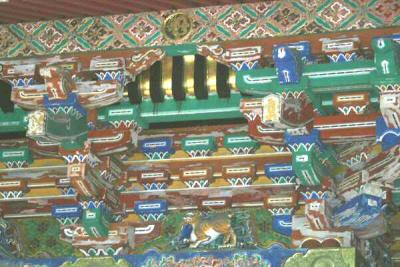 5 story pagoda, detailed |
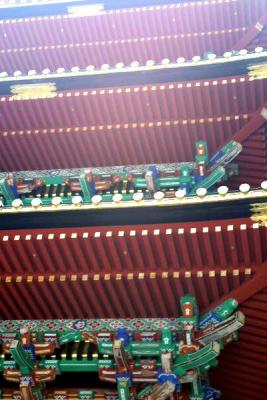 5 story pagoda This pagoda dates from 1650 but was reconstructed in 1818. It's remarkable for its lack of coundations - the interior contains a long suspended pole that apparently swings like a pendulum in order to maintain dquilibrium during an earthquake.
|
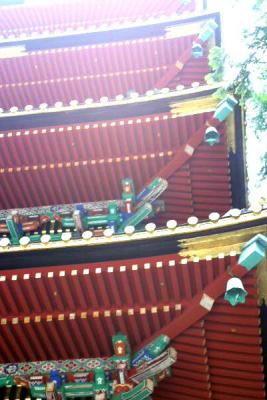 5 story pagoda This pagoda dates from 1650 but was reconstructed in 1818. It's remarkable for its lack of coundations - the interior contains a long suspended pole that apparently swings like a pendulum in order to maintain dquilibrium during an earthquake.
|
| previous page | pages 1 2 ALL | next page |
| comment | share |